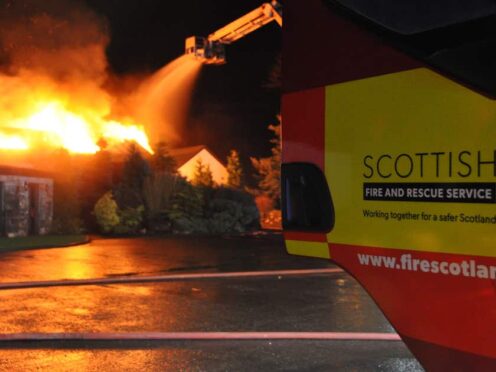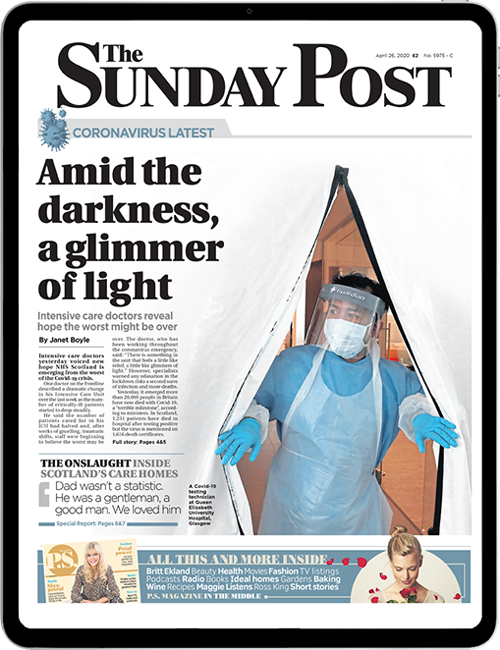
The Scottish Fire and Rescue Service (SFRS) needs increased funding in order to address modern-day risks such as climate change, bosses have said.
Stuart Stevens, deputy chief officer for the SFRS, says the organisation needs £60 million a year from the Scottish Government in order to fulfil its role.
It comes as the SFRS launched its Strategic Service Review on Tuesday, which will hear from the public on areas where they believe the force can be improved.
Speaking at McDonald Road Fire Station in Edinburgh, Mr Stevens said the review aims to “deliver an ambitious vision for SFRS that provides a modern, sustainable fire and rescue service for communities for Scotland”.
He said: “The big part of that is to ensure that we are addressing the emerging risk within Scotland and recognise that the risk in Scotland has changed, and as such SFRS needs to change in order to make sure that we can address that risk”.
Issues faced by the SFRS includes an ageing estate, with two-thirds of it being more than 30 years old.
In 2022-23 we attended 7,631 deliberate refuse fires, including rubbish & fly-tipping.DON’T:Store bins/sacks against your homeOverfill your bin or leave rubbish around itPut bins out until the day your refuse is collectedMore: https://t.co/s0AhrkSXtS pic.twitter.com/yJFVgyc674
— Scottish Fire and Rescue Service – Your Safety (@SFRSYourSafety) April 30, 2024
Fourteen fire stations also have issues with Raac (reinforced autoclaved aerated concrete) panels, and have had temporary supports installed to reinforce roofing.
Additionally, more than half of its 356 fire stations are deemed to be in a poor or bad condition.
Mr Stevens said there are no changes planned at this stage, and no current plans to close any of the stations, but they will consider the responses to the review and go from there.
He said risks faced by fire crews have changed in recent years, citing increased issues as a result of climate change, and said the SFRS must change in order to handle evolving risks in Scotland.
The fire chief said: “At the moment we’re looking at everything across the organisation.
“Risk in Scotland has changed. Things like shipyards, coalmines and heavy industry are no longer there, some of our fire station footprint was placed around about those types of risks.
“So risk has changed, and there’s emerging risks in terms of the impacts and effects of climate change which we are seeing much more readily at the moment, and incidents of climate change are becoming much more severe and much more frequent and we only have to look at last year in terms of things like storm Babet in the north-east of Scotland, and quite significant wildfires have happened in the north as well.
“This is really about changing the service in order to meet those risks, so fundamentally it’s about having the right people in the right place at the right time”.
In the last 20 years, the SFRS has reduced house fires by more than 50% – which Mr Stevens says the force can reduce even more if it changes its approach.
He also wants crews to have better training and equipment in order to deal with risks more effectively.
Mr Stevens said: “Whilst we welcome the increased funding that we’ve had from the Scottish Government this year, we believe that we need 60 million per year in order to address our capital backlogs”.
Community safety minister Siobhian Brown said: “The emergencies that the SFRS respond to have changed significantly over the years. Partly as a result of an emphasis on prevention, house fires in Scotland have decreased by almost half in the past 20 years and the total number of fires is down by 56% in the same period.
“The overall number of incidents that SFRS attends, however, has increased, with climate change presenting more challenges concerning flood risks and wildfires.
“It is right, then, that the SFRS carefully considers how the service should adapt to the changing risks to ensure it is as effective and efficient as possible and that firefighters are in the right place at the right time.
“I would encourage everyone to engage with SFRS and complete their online survey asking the public what they need from their fire service and where they think resources should be prioritised.
“Whatever changes may be considered by SFRS in the future, I have absolute faith that the safety of our communities will remain steadfastly the service’s top priority.”
A Scottish Government spokesperson said: “Despite deeply challenging financial circumstances due to the UK Government settlement, the Scottish Government is providing £393.3 million in funding for the SFRS in 2024 – an increase of £29.3 million from the previous year.
“This will enable SFRS to continue to deliver the high standard of services required to keep our communities safe.
“The increase from £32.7 million to £43 million in capital funding will allow the service to invest more in property, fleet and equipment.”

Enjoy the convenience of having The Sunday Post delivered as a digital ePaper straight to your smartphone, tablet or computer.
Subscribe for only £5.49 a month and enjoy all the benefits of the printed paper as a digital replica.
Subscribe